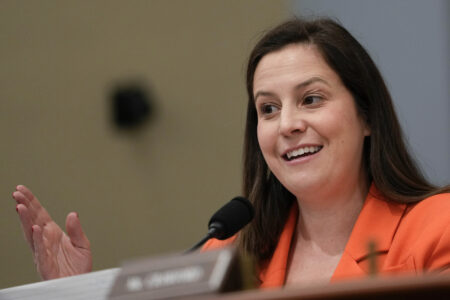Report: North Country housing affordability at 33-year low

This graph, using data from the New York State Association of REALTORS, shows the affordability of buying a home in the state. The higher the number, the more affordable it is. The data shows that housing affordability is at a severe decade-low point currently. (Provided photo — NYSAR)
The housing shortage in the Tri-Lakes is evident just based on anecdotal evidence, but statistics from the New York State Association of REALTORS shows the extent of the severe reduction in housing affordability in the past few years.
NYSAR released a statewide housing report in August based on July’s data, which showed that as more people are priced out of buying a home because of stagnant wages, rising mortgage rates and a highly competitive market, renting has become harder, too.
“The U.S. housing market has continued to cool, as rising mortgage rates and record-high sales prices have stifled affordability, weakening demand and pricing out a multitude of buyers,” the NYSAR report reads. “Many are turning to the rental market, where competition has intensified due to increased demand.”
A September report from the Northern Adirondack Board of Realtors, which covers Clinton, Essex, Franklin, Hamilton and Warren counties and uses NYSAR data, says housing affordability is at “a 33-year low.”
The housing crisis in the North Country is not a new issue. It impacts nearly every aspect of life here, from school enrollment to business staffing shortages. It’s impacting some local businesses’ ability to grow and families’ ability to put down roots in the Adirondacks. It causes a reduction in volunteer services and contributes to homelessness.
Homes have become less affordable. That’s clear from the “Housing Affordability Index” graph NYSAR provides. On this index, a higher number means greater affordability. Housing affordability, in the most recent report, scored at the lowest it has been since the 2008 recession — 128.
This means that currently, the median household in the North Country makes 128% of what is necessary to qualify for a median-priced home with current interest rates.
Affordability has fluctuated wildly over the years. It spiked at a 13-year high during the onset of the pandemic in January 2020, and then plummeted — from around 275 then, to around 128 now.
That’s not good for most homebuyers, NYSAR said, and it’s caused by low wages.
“Nationally, median household income has failed to keep pace with increasing mortgage payments, with the costs of buying a home about 80% more expensive now than they were just three summers ago, according to the National Association of REALTORS,” the statewide NYSAR report reads.
The average sales price for a home in the North Country is the highest it’s been in nearly a decade and a half. Since 2007, the average of all homes sold in the region had never risen above $300,000, and only rose above $250,000 in seven select months — that was, up until 2020.
The average sales price spiked at the start of the pandemic and has remained high ever since. Since June of 2020, the average sales price of a home has not gone below $250,000, has spent a good amount of time above $300,000 and has even approached $400,000 on two occasions.
The average house went for $305,409 in August, according to NYSAR data.
Meanwhile, people are paying closer to the listed price for a home than they have in a very long time. The NYSAR data shows that from 2009 to 2020, properties sold for between 90% and 95% of their asking price. Now, people are paying, on average, 97.8% of the listed price. This points to competitiveness in the housing market, as buyers are less able to negotiate lower sales prices.
The number of days a house is on the market — between when a property is listed and when an offer is accepted — is the lowest it’s been in the North Country in a long time. The average home is on the market for 126 days now. Up until mid-2021, homes had been on the market between 150 and 300 days, fluctuating steadily.
The housing inventory is also the lowest it’s been in a decade-and-a-half. The inventory is the number of properties actively for sale. The inventory rose from 600 in 2007 to over 2,000 in 2015 and was already on the decline when the pandemic struck in 2020. That drop was hastened in 2020, flatting out the yearly rise and fall in inventory to a straight line on a decline.
In early 2021, the inventory plateaued at around 500 active properties.
In Essex County, there are also fewer homes on the market. In August, there were 164 homes for sale in Essex County, 16% fewer than in August 2021. There were 163 homes for sale in Franklin County, 3% more than August 2021.
NABOR predicts that price increases are expected to level off in the coming months, saying the market may shift to be more “buyer-friendly.”
“Inflation, higher interest rates, and fears of a potential recession have taken a toll on buyers and sellers this summer, leading many people to stay on the sidelines to see what will happen with them market,” NABOR wrote in its report. “But some experts, including NAR Chief Economist Lawrence Yun, believe the worst of inflation may be over.”
— — —
(Editor’s note: This story is part of an ongoing series about the affordable housing crisis and how it’s impacting the Tri-Lakes region. In upcoming issues, the Enterprise will examine what local housing developments are in the works, things local organizations and individuals are doing to help mitigate the crisis and more. Readers who want to share their story about how the housing crisis has impacted them can contact the Enterprise newsroom at news@adirondackdailyenterprise.com.)



